#northern olingo
Explore tagged Tumblr posts
Text

A Northern olingo (Bassaricyon gabbii) in Monte Verde, Costa Rica
by keith bailey
#northern olingo#olingo#olingos#procyonids#bassaricyon gabbii#bassaricyon#procyonidae#carnivora#mammalia#chordata#wildlife: costa rica#wildlife: central america
108 notes
·
View notes
Text

Northern olingo (Bassaricyon gabbii)
yepyep
3 notes
·
View notes
Text

The olinguito is the smallest member of the raccoon family. It has thick, woolly fur that is denser and more colorful (orange or reddish brown) than its closest relatives, the olingos. Its head and body length is 14 inches long (355 mm), plus a tail 13-17 inches in length (335-425 mm), and it weighs 2 pounds (900 grams). Males and females are similar in size.
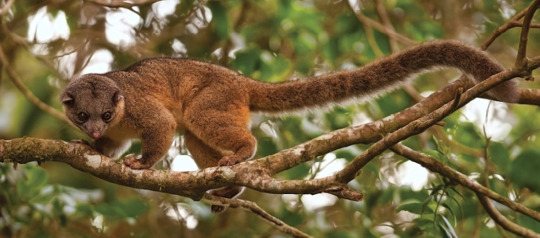
The olinguito mainly eats fruit, but may also eat some insects and nectar. The solitary animals live in trees and are mostly nocturnal. It is an adept jumper that can leap from tree to tree. Mothers raise a single baby at a time. The olinguito is found only in cloud forests of the northern Andes Mountains, in Ecuador and Colombia, at high elevations (5,000 to 9,000 feet above sea level).
335 notes
·
View notes
Text
Supersized fruit eater database on climate change frontline
In this month’s open-access journal Global Ecology and Biogeography, the group introduces for the first time a hulking list of more than 45,000 traits for creatures that eat fruit. Frugivoria, named for the species called frugivores who survive mainly on fruit, supersizes existing databases by providing researchers and conservationists with one-stop listings of both critters and birds in the forests of Central and South America. Frugivoria’s data and workflow are open and accessible to all to help facilitate its use for addressing the biodiversity crisis. In a time of rapid climate change, it’s crucial to understand how the fruit eaters are doing in specific ways. “With climate change, seed dispersion is really important,” said Beth Gerstner, a PhD candidate in the MSU Department of Fisheries and Wildlife who led the development. “Fruit eaters maintain forest composition and health by pooping — which spreads seeds. Frugivoria is an important contribution because researchers can use this to understand the diversity of their roles in the ecosystem.” Knowing what is doing the fruit eating and pooping, as well as their distribution and life traits — their life expectancies, breeding habits, habitat preferences — is critical to tracking changes that climate change may bring. Yet current databases were fragmented or incomplete. Starting in 2018 at MSU, 12 undergraduate students were tasked with sleuthing through of mounds of scientific publications to flesh out existing records of fruit eaters, adding birds for a more holistic understanding of the forests. Most exciting, Gerstner said, was entering 44 new species, like the olinguito. That’s a member of the same family as racoons that lives in the cloud forests of the northern Andes, and one that Gerstner studies. The olinguito had been mistaken for the larger olingo, but upon being discovered in 2013 has been found to indeed be genetically different. “Natural history is entering the age of big data,” said Phoebe Zarnetske, associate professor in integrative biology and director, Institute for Biodiversity, Ecology, Evolution, and Macrosystems (IBEEM). “Through Frugivoria, we are contributing to increasing the accessibility of natural history information traditionally found in museums and collections. This project provided a unique opportunity to engage numerous undergraduates in research with data science and functional ecology. Zarnetske said Frugivoria can help with both basic and applied questions about species’ functions in their environment. It can be used by community scientists to learn more about species’ natural history, and it can aid in species conservation assessments “As a result,” she said, “Frugivoria is part of something bigger — we can leverage the power of its big data to help solve the biodiversity crises.” Getting Frugivoria out where it’s needed is Gerstner’s goal. “My hope,” she said, “is for the database to be used by the International Union for the Conservation of Nature and people doing on-the-ground conservation.” Both Gerstner and Zarnetske are members of MSU’s Ecology, Evolution, and Behavior Program and Spatial and Community Ecology (SpaCE) Lab The work behind “Frugivoria: A trait database for birds and mammals exhibiting frugivory across contiguous Neotropical moist forests” was supported by a NASA Future Investigators in NASA Earth and Space Science and Technology, a National Science Foundation Campus Cyberinfrastructure program and computational resources and services provided by the Institute for Cyber-Enabled Research of which co-author Patrick Bills is a member. In addition to the open access paper in Global Ecology and Biogeography, the database itself is published open access with the Environmental Data Initiative.
0 notes
Text
My favourite procyonids
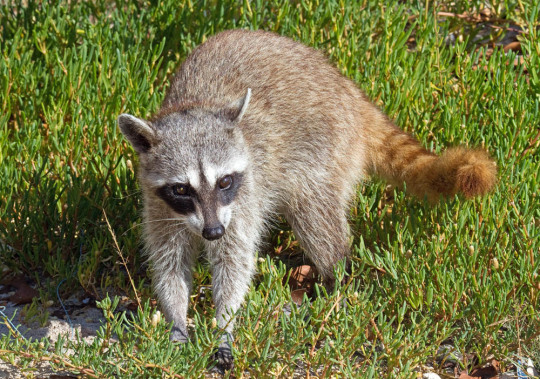
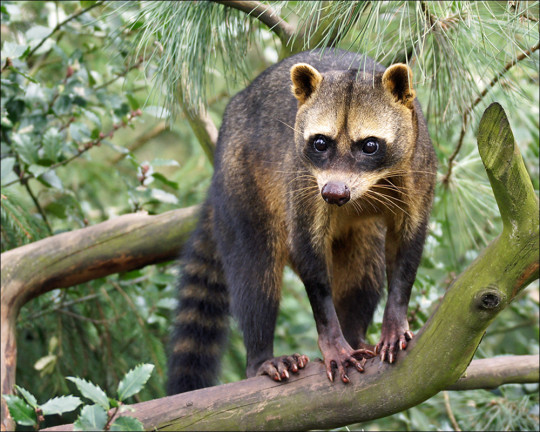
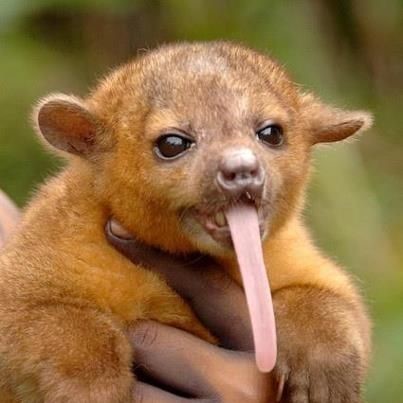
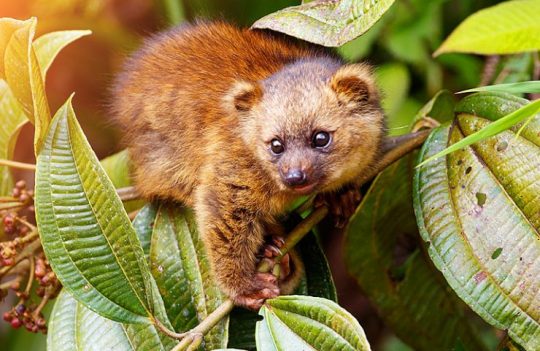

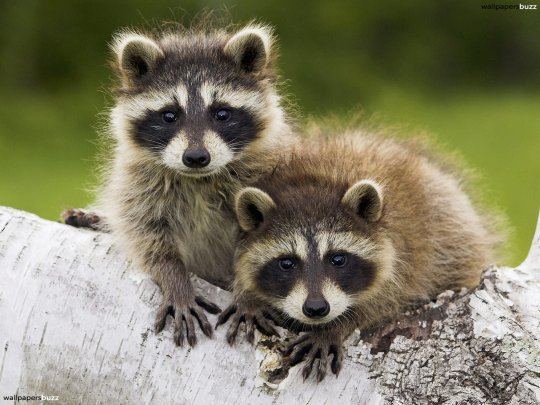
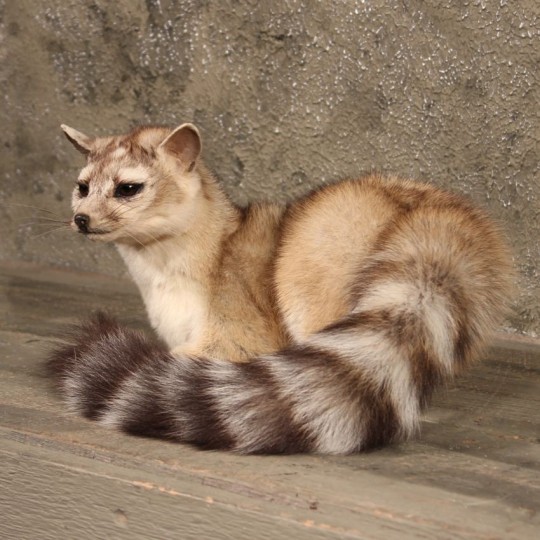

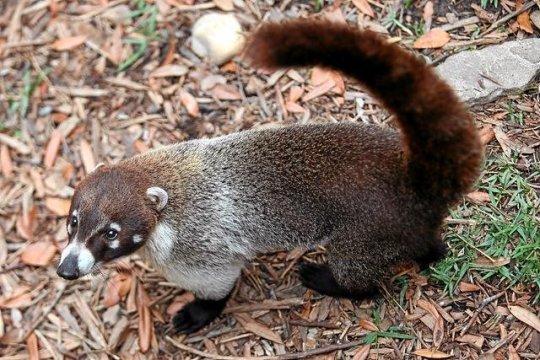
#procyonidae#procyonids#cozumel raccoon#crab eating raccoon#kinkajou#olinguito#Northern olingo#raccoon#ring tailed cat#south American coati#white nosed coati#coatimundi#favourite animals#favourites
54 notes
·
View notes
Text
Object Weird Wonder Animals
For @computerwolfartsy
Backpack - Eastern Kangaroo Banana Yogurt - Crowned Lemur Bonsai - Japanese Raccoon Dog Bun Hat - American White Rabbit Burgie - Fennec Fox Clicky - Field Mouse Cotton Candy - Poodle Crayon - Galah Daisy - African Lion Easter Egg - Robin Fish Cracker - Smooth-Coated Otter Frog Hat - Bullfrog Ghost - Albino Bat Gummy - Northern Olingo Handy - Spider Monkey Happy Balloon - Southern Flying Squirrel Ice Cream - Arctic Hare Ketchup - Red Deer Lemon - European Mink (because Lemon from Object Survival Island was a Northern River Mink) Lolly - Plains Zebra Mushroom - Ladybug Onigiri - Shiba Inu Pacifier - Spotted Skunk Paper Crown - Emperor Penguin Pill - Red-Crested Cardinal Popsicle - Scarlet Macaw Pop-Up - Jackal Positively - Alpine Pika Ramen - Eurasian Beaver (because Noodles from Object Redundancy was a Canadian Beaver) Ribbon - Caribbean Flamingo Serotonin - Two-Headed Snakes Shrimp - Alaskan Pink Shrimp (obviously) Shuffy - Quokka Slimy - Eastern Glass Lizard (because Blob from Open Source Objects was an Asian Glass Lizard) Snail Shell - Garden Snail Soda Cup - Northern Goshawk Strawberry - Bobcat Tamagotchi - Silkie Chicken (because Tamagotchi from Object Multiverse was a Domestic Chicken) Tiny Buddy - Marmoset Toast - Wood Duck Toy Cube - Porpoise Water Cube - Dolphin Jaybey - Tasmanian Devil
2 notes
·
View notes
Photo

Bassaricyon gabbii - Northern Olingo
#northern olingo#olingo#bassaricyon#gabbii#procyonidae#carnivora#mammalia#least concern#north america#central america#forest#mountain#terrestrial#faunal frontier#the faunal frontier#thefaunalfrontier
20 notes
·
View notes
Text

Northern olingo (Bassaricyon gabbii)
Jeremy Gatten
2 notes
·
View notes
Text

This northern olingo, Bassaricyon gabbii, is apparently a common visitor at the Monteverde Hummingbird Gallery.
1 note
·
View note
Text

Northern olingo (Bassaricyon gabbii)
Scott Ableman
1 note
·
View note
Text

Northern olingo (Bassaricyon gabbii)
yepyep
1 note
·
View note
Text





Northern olingo (Bassaricyon gabii)
TK
0 notes
Text

A thief! (Northern olingo, Bassaricyon gabbii)
Anne McCormack
0 notes
Text

Northern olingo (Bassaricyon gabbii)
John Mangold
1 note
·
View note
Text
PPC Spanish Meet The Letters Animals (Remake)
This for you @creamypuffycakezowo. You can change some species if you like.
A: Abeja/Bee (Lowercase) Ardilla Voladora/Flying Squirrel (Uppercase) B: Bandicoot (Lowercase) Bilby Mayor/Greater Bilby (Uppercase) C: Cangrejo Rojo/Red Crab (Lowercase and Uppercase) Ch: Chimpancé/Chimpanzee (Lowercase and Uppercase) D: Dinosaurio/Dinosaur (Lowercase and Uppercase, originally a Dunnart) E: Erizo/Hedgehog (Lowercase) Equidna/Echidna (Uppercase) F: Foca Anillada/Ringed Seal (Lowercase) Flamenco Americano/American Flamingo (Uppercase) G: Gorrión/Sparrow (Lowercase) Gato Montés Árabe/Arabian Wildcat (Uppercase) H: Halcón de cola roja/Red-Tailed Hawk (Lowercase) Halcón Peregrino/Peregrine Falcon (Uppercase) I: Iguana (Lowercase) Impala (Uppercase) J: Jerbo de Patas Peludas/Hairy-Footed Gerbil (Lowercase) Jaguar (Uppercase) K: Koala (Lowercase) Kinkajou (Uppercase) L: Lobo Mexicano/Mexican Wolf (Lowercase) Liebre Corsa/Corsican Hare (Uppercase) Ll: Chinchilla (Lowercase) Armadillo De Nueve Bandas/Nine-Banded Armadillo (Uppercase) M: Murciélago/Bat (Lowercase) Mapache Canadiense/Canadian Raccoon (Uppercase) N: Nutria De Mar/Sea Otter (Lowercase) Numbat (Uppercase) Ñ: Ñu/Wildebeest (Lowercase and Uppercase) O: Ornitorrinco/Platypus (Lowercase) Olingo Del Norte/Northern Olingo (Uppercase) P: Puercoespín Brasileño/Brazilian Porcupine (Lowercase) Protelo/Aardwolf (Uppercase) Q: Quetzal (Lowercase) Quoll Machada/Spotted Quoll (Uppercase) R: Ratón Doméstico/House Mouse (Lowercase) Rata Común/Common Rat (Uppercase) S: Salamandra/Salamander (Lowercase) Suricata/Meerkat (Uppercase) T: Topo/Mole (Lowercase) Tur��n Europeo/European Polecat (Uppercase) U: Unicornio/Unicorn (Lowercase and Uppercase) V: Visón Americano/American Mink (Lowercase) Venado Sika/Sika Deer (Uppercase) W: Wombat (Lowercase) Wallaroo (Uppercase) X: Xenops (Lowercase) Xoloitzcuintli (Uppercase) Y: Coyote (Lowercase) Yak (Uppercase) Z: Zorrillo/Skunk (Lowercase) Zorro Ártico/Arctic Fox (Uppercase)
1 note
·
View note